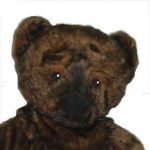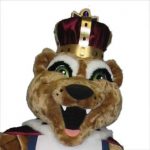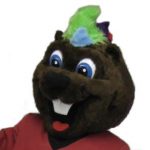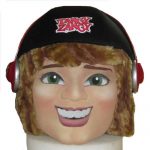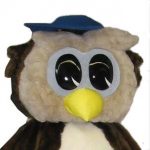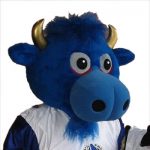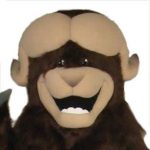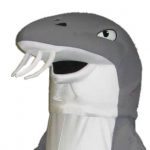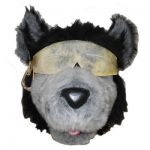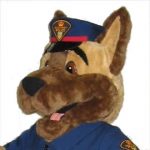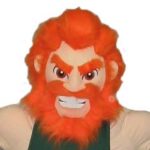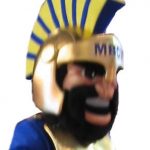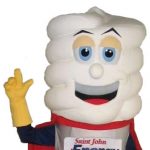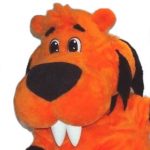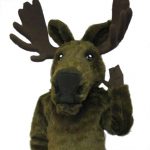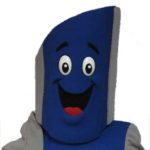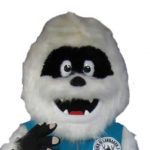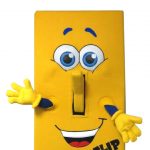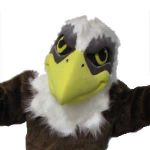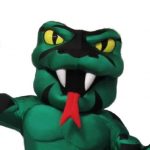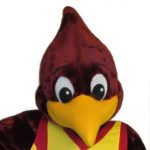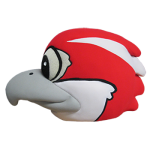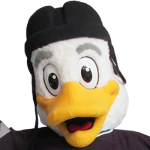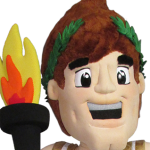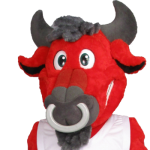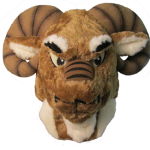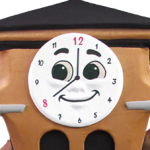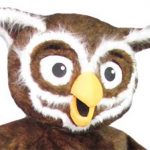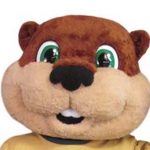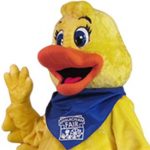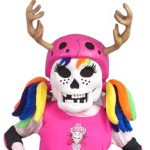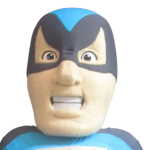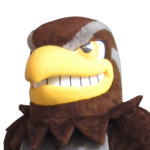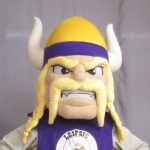Whether meeting children or whipping up excitement with the fans, these versatile athletic and walkabout mascots represent the spirit of your company, school or sports team. They connect with people in an immediate, fun way.
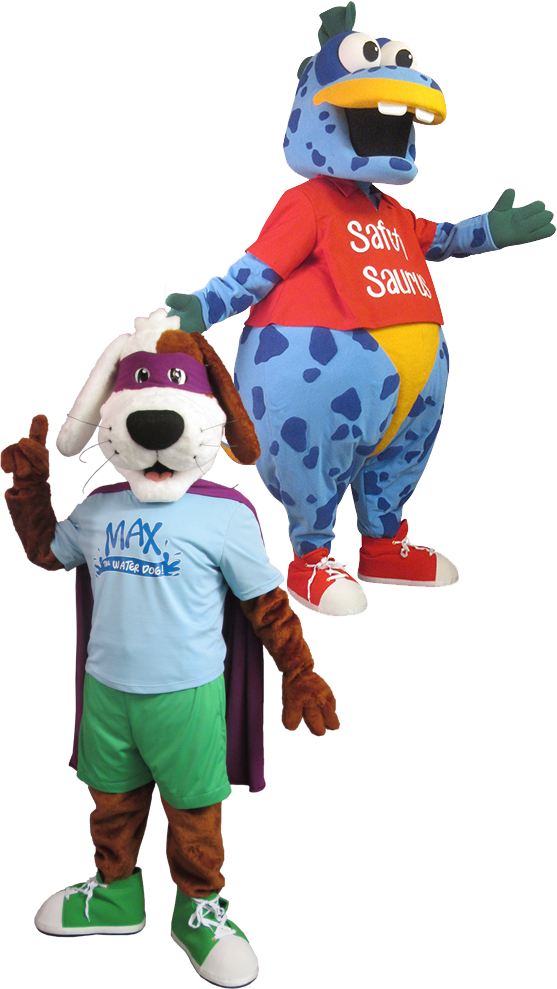
Athletic or Walkabout Mascots, what are the differences?
Walkabout and Athletic characters share a lot of similar characteristics so we’ve grouped them together for you. This is the group you’ll often find sports mascots. The largest distinction between these and their well-known counterpart (the shape mascot) is that they have removable heads and bodies with arms and legs. Past these features, they can be incredibly diverse.
Walkabouts and Athletic characters can be cute, cartoony and approachable ambassadors or teaching tools for corporations; think of a cuddly bear or a dopey dog. On the other hand they might be tough guys meant to antagonize the opposing sports team or school, like a Trojan warrior or a fierce falcon. They may range in height, gender or age.
Athletic mascots are highly mobile characters… often fast, energetic and acrobatic. They are often referred to as sports mascots! These mascots are built to be agile and streamlined so they can perform crazy stunts or strike a signature pose with grace and style. The best athletic mascots are usually smaller and close fitting for optimal vision and mobility, and may even be specifically tailored to fit one or two dedicated and athletic performers. And remember, athletic characters need not be limited to the sports mascot market… there are quite a few athletic characters in many diverse markets. The reverse is also true – sports mascots do not necessarily need to be athletic in nature!

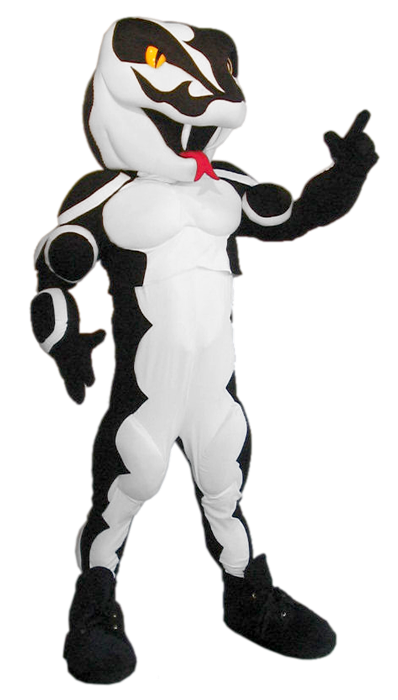
MUSCULATURE
Musculature in the form of padding or fully carved muscle groupings can give the illusion of a heroic and fierce character. For an economical approach, musculature can be as simple as extra shoulder padding used to create that “V” shaped cartoon character. If you would like a more dynamic look, we can hand carve individual muscles on the shoulders, biceps, abs and calves. Muscles can even be painted in place. Athletic characters will want to consider lighter musculature that doesn’t interfere with movement, perhaps emphasizing some of the performer’s natural muscles. In fact, some of the most athletic team mascots have no added musculature at all!
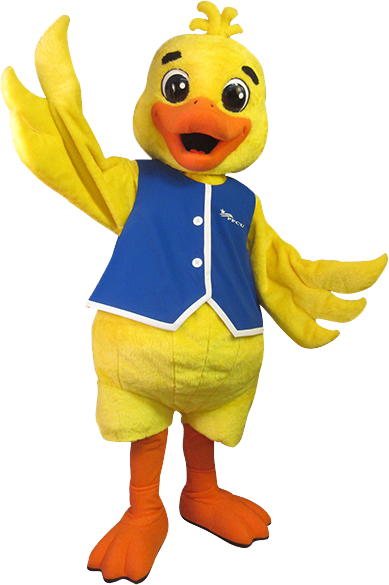
HANDS
There are many style options for hands, such as: large cartoon hands, animal paws with or without claws or paw pads, hands that look like hoofs, a four fingered or five fingered glove or a hidden hand that is part of the sleeve (e.g. wings). Whatever design you ultimately decide on, we always consider safety (such as quick release features), size adjustment and wear ‘n’ tear.
You may know what your mascots hands should look like, but have you considered dexterity? Think about the mascot’s general routines and consider the degree of dexterity that is best for you. We are able to create advanced detailing such as special gripping palms for holding basketballs or stadium grip hands that are specially reinforced for holding handrails (this is great for sports mascots).

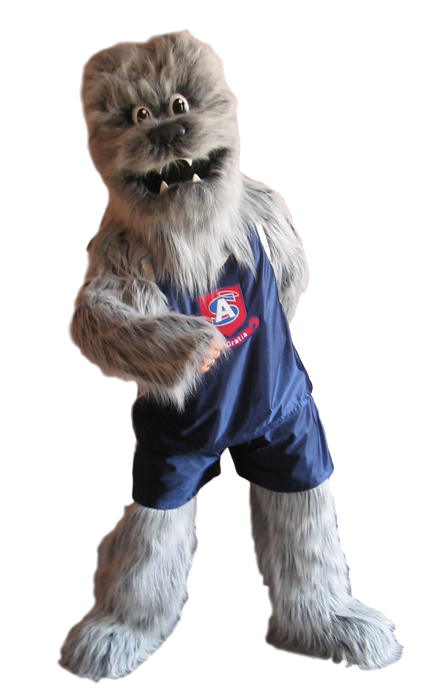
SIZING
Small and light heads are the most comfortable option and can be worn with the support of the neck alone to allow movement of the head from side to side and up and down. Large heads require shoulder support or an added support system. They may limit arm mobility and feel bulkier. However, they can help you to achieve a more “cartoony” look. Adequate support is incorporated when constructing all our heads so as to avoid adding undue stress on the performer.
To determine size, take a human silhouette and place it over the image of your mascot design. While keeping the ratio of the silhouette constant you can enlarge or shrink it to fit in your sketch. Now considering this to be a person around 5’8” or 5’10” you can imagine what the height of your overall shape will be when complete.
While it is incredibly effective to pad and enlarge the shoulders, hips and tummy to disguise shape, having an extra-large body can be bulky to wear for characters wanting to perform gymnastic-type moves.
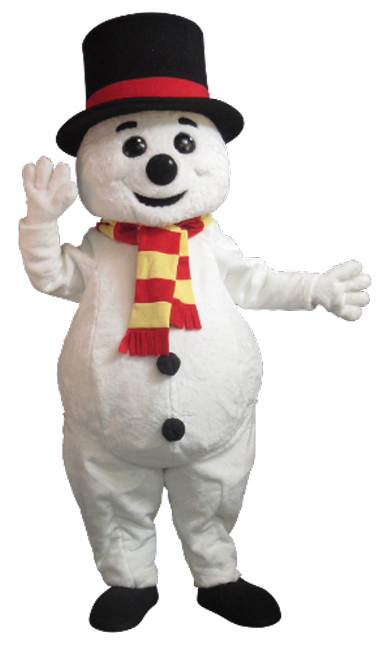
HEAT CONTROL
It is important to give special consideration to where you will be using a high performance mascot. Using a cooling system may be the optimal choice for a walkabout being worn in the summer, but many athletic characters find the addition of a cooling vest will change the balance when doing flips. Special materials to wick away sweat or carefully concealed ventilation can be incorporated into the design allowing comfortable access to air. Exhaust fans expel stale air. Oversizing a character can allow for both extra under-clothing in cold weather and circulation, but may create a more bulky character.

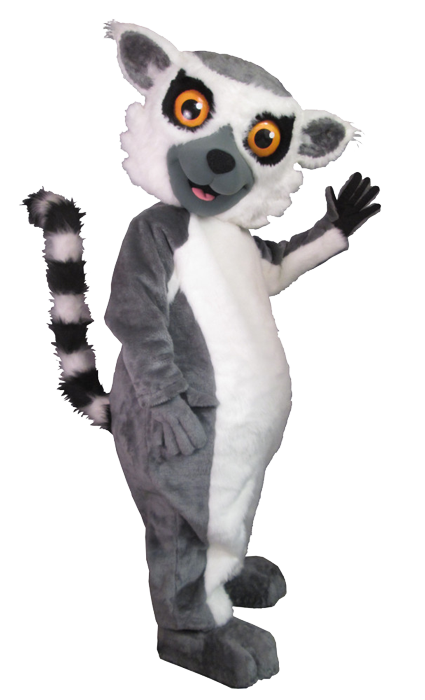
TAILS
Is the tail sticking out at a 90 degree angle? Is it a tripping hazard or tempting for children to pull on? A reinforced tail that is worked into the supporting under-structure is often the best idea for any character. However for the high performance mascot, we recommend limiting the length and overall weight due to the mascot’s activity level.
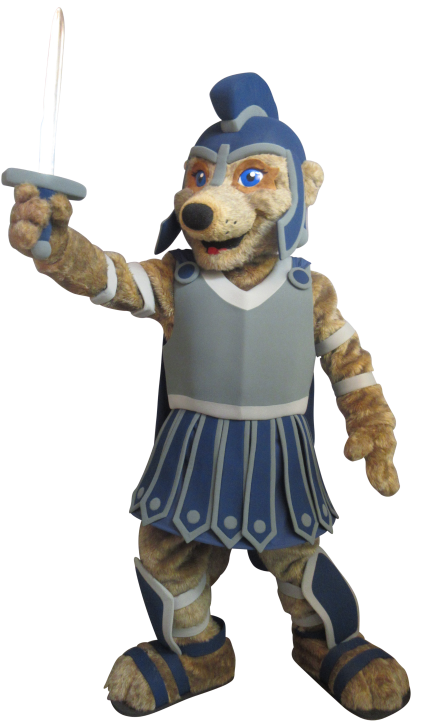
VISION
Good vision is important for all mascots, especially if they are athletic. We strive to give your character the best vision possible while still maintaining the look you are trying to achieve. Vision is generally provided through the mouth, nose or eyes (or a combination of all three) by using porous foam screening, or a combination of screening and foam.
Good vision means safety; if your mascot can see his or her feet then they will also see small children and objects in their path. Having great vision will allow the athletic mascot to exhibit talents beyond the regular walkabout character, like flips, jumps and rolls in between game-play. In some cases, when planned in the design stage, extra vision can be worked into other areas of the head as well!
Please keep in mind that some characters are inherently limited in their vision, and in this case, we will discuss best vision options with you from the very beginning of the production process.

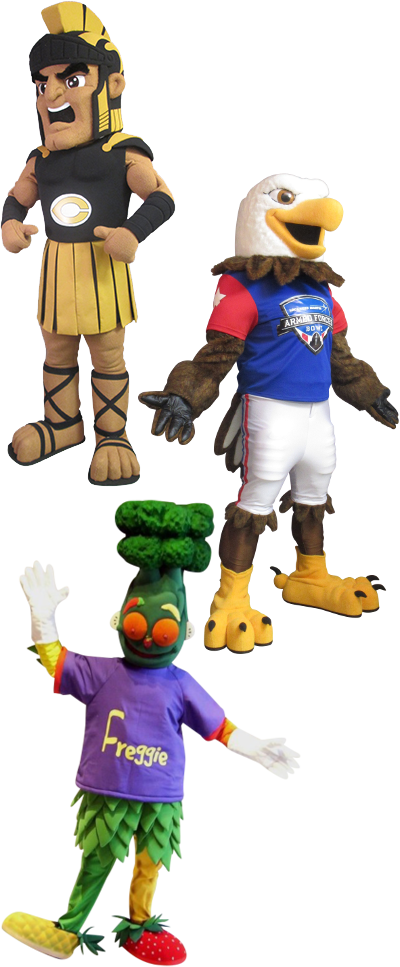
FEET
Big mascot feet achieve a really fun look; however, we recommend smaller feet that are 16” in length or 25oz in weight for more athletic mascots. This will allow your footing to be more dexterous and your performance more active and dynamic. Here are some common mascot foot choices:
Standard mascot feet are made from flexible, durable soling which allows for a greater grip on the ground with some flexibility in foot movement. They are lightweight and can be worn by a variety of shoe sizes. Since the wearer uses their own shoe inside the feet, they are the most hygienic choice. Additionally, the hard carved foam ensures a long lasting foot that maintains its shape over time.
Convertible skate shoes are standard mascot feet with a removable panel at the bottom that skate blades can be slid through.
Skate shoes are separate skate covers that look like mascot skates.
Stage mascot feet allow for a high degree of natural movement and flexing. These feet are made from a soft foam top and a thinner soling than the usual walkabout foot. While these may not be as durable and long lasting as the regular walkabout shoe, they can be critical to a live stage performance. In some cases, a design can be incorporated into the shoes’ soling (i.e.: a paw print).
Customized athletic shoes are an option for highly active performances. This mascot foot incorporates your own shoe into the sole of our mascot foot so you always have direct contact with the ground.
NEED MORE INFORMATION
Sugar’s Mascot Costumes has been making mascots with heart since 1985! If you are interested in having us create a custom mascot for your company or would like information about cleaning & repairs, please complete the following form or contact us in person or by phone.


